THE THETA GIRL
Directed by Christopher Bickel. 2017. United States.
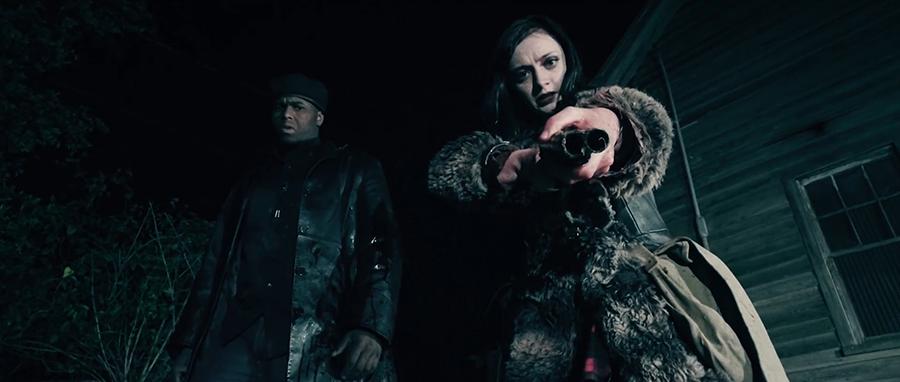
“I like grindhouse movies” is one of the most obnoxious sentences in the history of film discourse. That meaningless assemblage of words became de rigueur on horror movie forums following the release of the Quentin Tarantino / Robert Rodriguez double feature GRINDHOUSE in 2007. It’s a nonsensical statement because, of course, there is no such thing as a grindhouse movie. A grindhouse was a theater, not a genre, and those grindhouses didn’t just run chopsocky and Eurotrash sleazefests 24/7. They ran everything from first-run films, highfalutin arthouse gems, to triple features of classic American westerns and endless loops of hardcore pornography. Saying you like grindhouse movies is essentially declaring that you enjoy all movies.
But no, when people said grindhouse movie, they weren’t speaking about movies in general. They were signaling a specific kind of movie. Pre-Tarantino, we called them exploitation movies. Even still, that term describes more of a financial mandate than a distinct kind of film. These movies capitalized on (aka exploited) a fad or trend, or captured attention through salacious advertising and taboo-pushing content. Made-for-TV movies of the week often focused on “torn from the headlines” topics. There is no difference between those innocuous ratings grabs and your bog-standard Nazisploitation flick. They are both navel-gazing attention whores. They are both exploitation movies.
This newfangled interest in (ughhh) grindhouse movies led to a slew of new films, many of which simulated (or attempted to, anyway) the aesthetics and filmmaking ethos of the old maestros of 1970s B-movies. It was all deeply cynical and kinda gross to me. There was nothing authentic about these films, not even a hint of wistful nostalgia. No, Tarantino, Rodriguez, and all the shameless hucksters that followed were just the same old exploitation peddlers selling us on a new fad, using our love for B-movies and subversive underground genre fare as just another gimmick. It all rubbed me the wrong way then, and it never stopped.
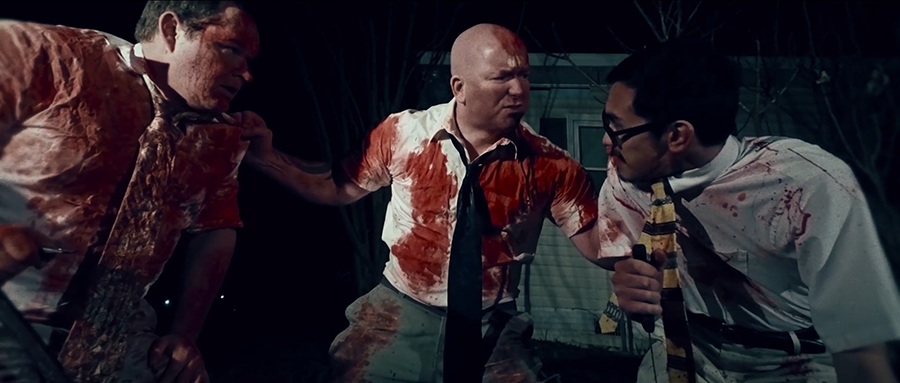
So when I saw the trailer for THE THETA GIRL several years back, I completely wrote the movie off. The image of Victoria Elizabeth Donofrio with her cherubic face and curvy physique, brandishing a shotgun, immediately brought to mind Christina Lindberg in THRILLER: A CRUEL PICTURE (minus an eye patch). The opening crawl warning of scenes of sex and gore, followed by a relentless barrage of hyperactive hacking and squealing, reeked of cynical desperation. This was one of those movies, I thought. Every alarm bell in my brain was ringing off the wall, and my interest, if it even existed in the first place, was gone, baby, gone.
Having now watched THE THETA GIRL, not out of interest but of desperation for something - anything - to watch, I can say that I was wrong on a level heretofore unknown. Because, while this does indeed feel like something made by a director whose favorite films were all released before 1985, it is not a cheap attempt at recreating those movies. In fact, it doesn’t feel like anything I’ve seen in recent memory. I remember reading Roger Ebert’s review of Jim Van Bebber’s excellent THE MANSON FAMILY. In it, Ebert says that Van Bebber’s film “exists in a category of one film - this film” and that is not only an apt description of THE MANSON FAMILY, it also describes THE THETA GIRL to a tee.
There is barely a plot to speak of. Gayce (probably more of a queer play on Edgar Cayce’s name than a reference to that serial killer fella) is a dealer pushing a designer psychedelic called Theta to club-going locals on the night of a Truth Foundation concert, an all-girl band comprised of her friends and roommates. Outside, sitting beneath a makeshift tent, is Leonard, Gayce’s homeless friend and helper in distributing these illicit, mind-altering substances. Truth Foundation chases a much worse band offstage as everyone in the crowd begins swallowing their pills and enjoying their evening.
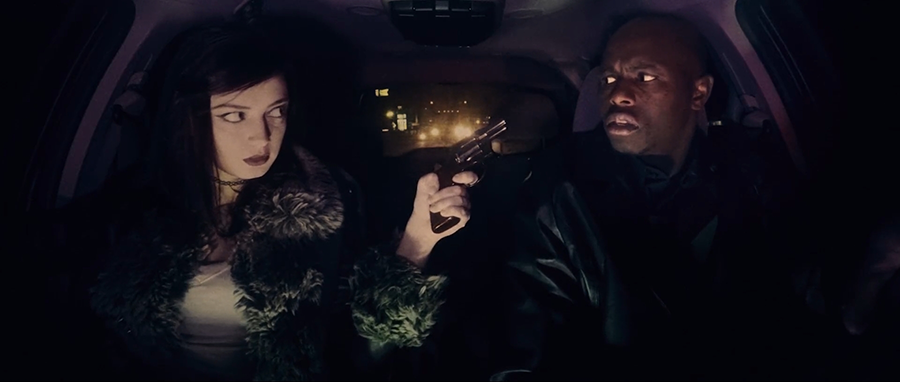
The only people not having a good time are a trio of Bible-thumpers led by Marcus, a surprisingly tough-looking Jesus freak who had a brief run-in with Gayce earlier that night. Unknowingly swilling sodas laced with Theta, our trio of religious extremists soon takes to the restroom for some vomiting. Gayce and the rest of the crowd begin to experience a kind of shared trip to a weird, alternate dimension that looks like a late 90s music video. Gayce has a brief conversation with the spiritual figure that resides there, a birdlike entity called, what else?, The Entity. Is it God? Is it a figment of unbalanced brain chemistry? Is there even a difference? And if so, does it really matter?
The night ends profitably for Gayce and her roommates, but the next day gets off to a bad start almost immediately. Gayce finds Leonard gutted, his intestines pulled out and arranged in a strange, occult symbol in the street. She takes her supplier, Derek, hostage, believing him to be the killer. Derek takes Gayce to see Papa and Momma Shotgun, the folks responsible for creating the drugs she has been selling. Unexpectedly, the cooks are just two wacky old people who have been doing psychedelics since the days of the Cuban Missile Crisis. Upon hearing that Leonard had his guts laid out in a way that matches an illustration in their makeshift holy book, the elderly couple gleefully commit suicide.
Clearly on the wrong track, Gayce next turns her attention to Coin, the lead singer of the band her friends chased off stage at the club the other night. She finds Coin’s bandmates bludgeoned and cut to pieces. Coin is lying in the backyard, his guts cut out and arranged in the same occult configuration. Of course, this is all caused by the trio of religious nuts we met earlier. Convinced their actions will bring on the rapture, Marcus & Friends head over to Gayce’s house to lay waste to everyone they can get their hands on.
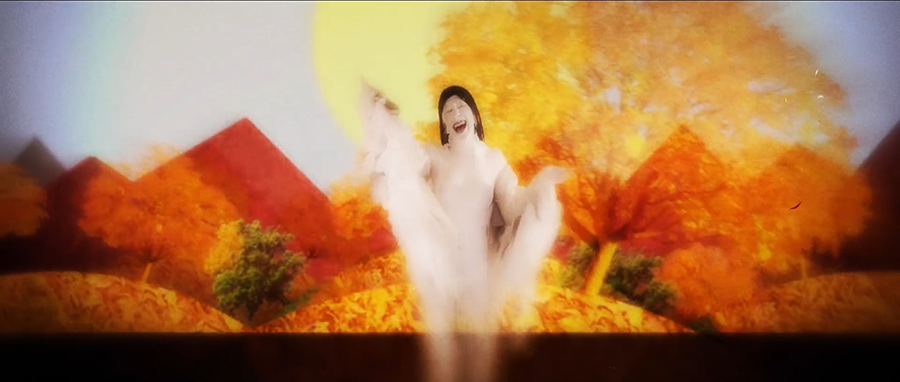
That’s basically all there is to it when it comes to the narrative. The remainder is your typical blood and guts revenge story. What we have here is basically the Manson family, a cultish group of individuals trying to instigate a catastrophic event through violence, crammed into the world of BLUE SUNSHINE, a movie all about never taking the brown acid. You’ve seen this story before, and you’ve probably even seen it told much better. Thankfully, propulsive energy can cover up for a great deal of narrative stagnation, because once THE THETA GIRL kicks into second gear, it never stops escalating, and my jaw never left the floor.
From its driving synth score to its transgressive, punk rock sensibilities, the sheer amount of forward momentum delivered by this film is pure cinematic tachycardia. It is a goddamn invigorating film, endlessly inventive, with a camera that barely stands still and pitch-perfect performances, all wide-eyed screams and grunts. Donofrio and Shane Silman are both barely contained at times, and when they get their chance to chew the scenery, they’re like downed power lines, hissing and sparking out of control. While nothing about this film feels quote-unquote professional, every atom of it feels alive. If this is what you can do with only $14,000, there’s even less excuse for studio films to feel so mundane and geriatric.
Underneath all the stage blood and sausage meat, there’s a feeling of ceaseless ennui, and a philosophical argument that drugs and religion are somehow identical, that both are merely doorways to purpose or tranquility, true opiates for the masses. The shared euphoric high experienced by the crowd of club-goers is qualitatively no different than a religious mass. The Entity speaks in deepities, questions, and non-sequiturs. Like spiritual communion through prayer, answers are intuited, not heard, and vaguely defined, not concrete. The Entity makes broad philosophical and spiritual pronouncements that could only make sense within the mind of the individual listener. Even though all these people are sharing a trip, they’re still separate. That ennui, that existential angst, cannot be extinguished, only pacified, either through prayer or pills.
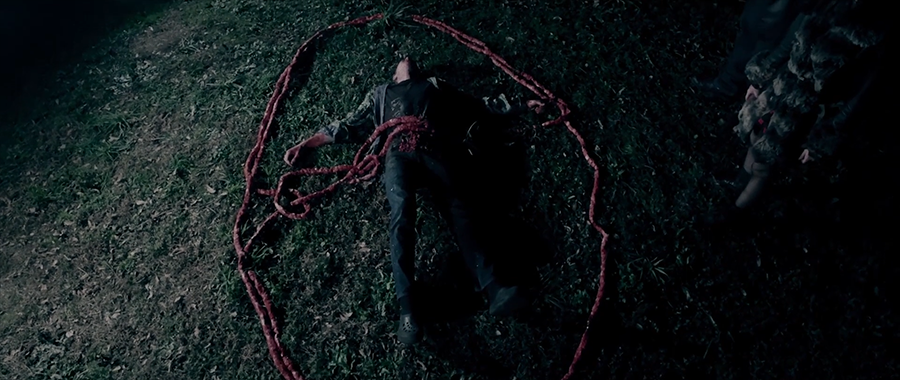
It’s an interesting subtext for a film that cuts sharply to a graphic orgy, and lavishes as much care and attention to a woman being stabbed through the eye through her hand as it does to the quiet moments of two people sitting in the front seat of a car or to beautifully surreal hallucinations. THE THETA GIRL is distressingly violent at times, and not at all shy about baring a whole lot of flesh from a whole lot of angles. But yet, despite all of that, it never feels like outrage bait or a movie made solely for the purpose of testing boundaries. The movie is put together by a clever director who clearly knows his shit, and written with just enough tenderness beneath all the bloodshed to feel human. Writing this film off as some amateurish, Troma-esque edge lord fluff was a massive mistake on my part. There are times when the film is fairly overwhelming on a visceral level, but it’s also crammed full of oddly beautiful and tender moments.
THE THETA GIRL is the real deal, a remarkable, wild ride pulled together on a shoestring budget by a creative team that needs to keep working. It’s refreshing to know that films like this exist. We need them to save us from the mediocrity so often on display in multiplexes and streaming services. It is the perfect little yellow pill to take when you want a little respite from the usual or to feel like you’ve been kicked in the chest by a fucking mule.